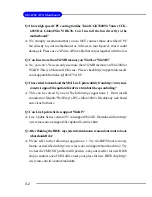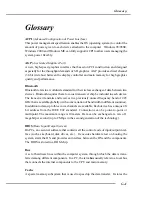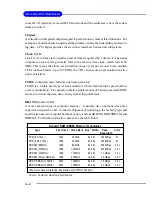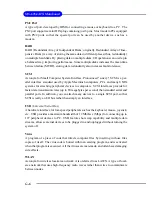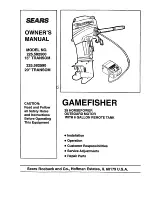
G-6
MS-6764 ATX Mainboard
PS/2 Port
A type of port developed by IBM for connecting a mouse or keyboard to a PC. The
PS/2 port supports a mini DIN plug containing just 6 pins. Most modern PCs equipped
with PS/2 ports so that the special port can be used by another device, such as a
modem.
RAID
RAID (Redundant Array of Independent Disks; originally Redundant Array of Inex-
pensive Disks) is a way of storing the same data in different places (thus, redundantly)
on multiple hard disks. By placing data on multiple disks, I/O operations can overlap in
a balanced way, improving performance. Since multiple disks increases the mean time
between failure (MTBF), storing data redundantly also increases fault-tolerance.
SCSI
Acronym for Small Computer System Interface. Pronounced "scuzzy," SCSI is a par-
allel interface standard used by Apple Macintosh computers, PCs, and many UNIX
systems for attaching peripheral devices to computers. SCSI interfaces provide for
faster data transmission rates (up to 80 megabytes per second) than standard serial and
parallel ports. In addition, you can attach many devices to a single SCSI port, so that
SCSI is really an I/O bus rather than simply an interface.
USB
(Universal Serial Bus)
A hardware interface for low-speed peripherals such as the keyboard, mouse, joystick,
etc. USB provides a maximum bandwidth of 12 Mbit/sec (Mbps) for connecting up to
127 peripheral devices to PC. USB features hot swap capability and multiple data
streams, allows external devices to be plugged in and unplugged without turning the
system off.
Virus
A program or a piece of code that infects computer files by inserting in those files
copies of itself. The virus code is buried within an existing program, and is activated
when that program is executed. All the viruses are man-made, and often have damaging
side effects.
WLAN
Acronym for wireless local-area network. Also referred to as LAWN. A type of local-
area network that uses high-frequency radio waves rather than wires to communicate
between nodes.







